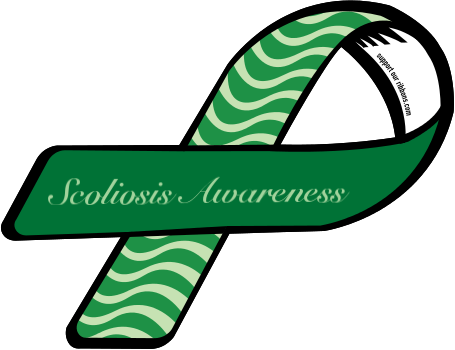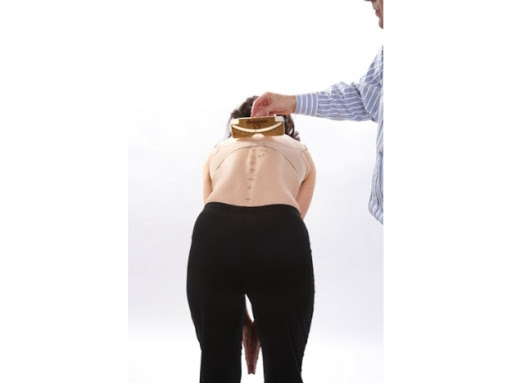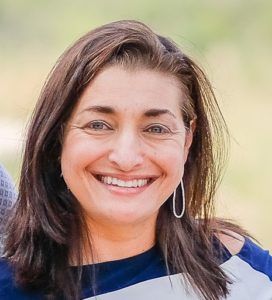June is National Scoliosis Awareness Month

Why is there an entire month dedicated to Scoliosis? I’m glad you asked!
According to the Scoliosis Research Society, the goal of Scoliosis awareness month is to “highlight the growing need for education, early detection, and awareness to the public about scoliosis and its prevalence within the community.” Statistics show that scoliosis affects about two to three percent of the population in the United States. The cause of most scoliosis is unknown, and the age of onset for most scoliosis cases is between eight to fifteen years of age in both males and females. However, females are more likely to experience curve progression and require scoliosis intervention, either specialized physical therapy or surgery.
Scoliosis Screening
Although Scoliosis cannot be prevented, early detection may be the key to avoiding surgery.
Most children in the United States are screened for scoliosis either at their annual doctor visits or during traditional sports physicals. Some states and school districts require scoliosis screenings at school, however, this is not mandatory in every state.

Looking at an individual from the back it might be difficult to identify the curve and scoliosis might be difficult to diagnose. However, when looking at an individual from the back, one might notice a difference in shoulder height, waist height, or one hip sticking out more than the other. Most scoliosis screenings are done with the Forward Bending Test (Adams Test). The client is asked to bend at the waist to assess for asymmetries in the back. An individual with scoliosis will generally present with a hump in their back where the ribs are rotated. A scoliometer (see picture) is often used to assess for rotation in the trunk. The scoliometer is similar to a level. When the scoliometer is run down the back the “bubble” in the level will move towards the side of the back that is higher or more rotated than the other side.
Scoliosis Diagnosis & Treatment
The screenings for scoliosis are crucial for early detection, however an x-ray is needed to confirm the scoliosis diagnosis. On the x-ray, the angle of the curve is called the Cobb angle. A small curve less than ten degrees is considered normal. A Cobb angle of ten degrees or greater is typically considered to be a scoliosis diagnosis. The treatment course for the scoliosis depends on the following:
- Type of scoliosis
- Age of the client
- Amount of growth the client has left (measured by Risser score or Sanders)
- Anticipated progression of the curve
The age of the client and the amount of growth left are extremely important factors because the scoliosis curve tends to progress and curves more during the age of rapid growth, usually around puberty. This is taken into consideration when determining the treatment course for the individual.
Scoliosis Brace
One popular method of treatment is to wear a brace. Wearing a hard brace to manage scoliosis has been around since the 1500s. The style, material, and type of braces have come a long way in the past fifty to 100 years, however, they are still made of hard materials and can be uncomfortable at times. Until recently parents and physicians questioned whether or not the brace actually worked. This question was answered in the recent groundbreaking BrAIST Study. The study concluded that adolescents who wear a brace for at least 18 hours a day during the time of most rapid growth will reduce the progression of their scoliosis and can prevent surgery.
Curvy Girls Support
There is no denying that wearing a brace eighteen to twenty plus hours a day during middle school and/or high school years can be very difficult for adolescents both socially, emotionally, and physically. Curvy Girls, a nationwide organization originated to help young girls deal with this difficult time. Curvy girls are working to help young girls cope with all the unique stresses of scoliosis.
Curvy Girls is a network of peer-led support groups that reduce the emotional impact of scoliosis by empowering girls through education, mutual support, and acceptance to become leaders, make healthy lifestyle choices, and improve self-esteem while giving back to the Curvy Girls community.
Recently, Emma Stockli, a 13-year-old Jacksonville, Florida resident, started a Curvy Girls chapter in Jacksonville, Florida. The chapter meets monthly to support one another. They also have guest speakers to educate the young girls on topics that are important for scoliosis. Emma Stockli and Donné Ordile Physical Therapist, appeared together on News4Jax during the June 2020 Scoliosis Awareness month to promote public awareness of scoliosis.
Schroth Method
In addition to wearing a brace to treat scoliosis there are other treatment methods. The simple goal for all treatments is to halt the progression of the scoliosis curve to prevent surgery. One method of treating scoliosis is the Schroth Method. The Schroth Method performed by a Physical Therapist with additional training and certification in scoliosis and Schroth treatment methodologies. The Schroth Method has been used throughout Europe for over 100 years and due to its fantastic results and success, it is gaining more attention in the U.S. The method originated in Germany, by Katharina Schroth. She had scoliosis and doctors fit her with a scoliosis brace made of steel. Inspired to improve scoliosis without wearing a brace, she immediately began to devise a way to stop scoliosis from progressing. It soon became her life’s work and she began to teach others. Katarina’s daughter, Christa Schroth (Christa Lehnert-Schroth), became an important part of her Scoliosis practice. She assisted her mother from a young age and went on to become a physical therapist. Her contributions throughout her life helped advance the method.
The Schroth Method works to stabilize the spine and prevent the curve from progressing. At ScoliosisPTJax the Physical Therapist, and owner of the studio, Donné Ordile will begin with a detailed analysis of the x-rays and an individual’s posture. Then the therapist will develop an exercise program designed specifically for the individual’s curve. The unique exercises incorporate the general principles of three-dimensional postural correction, expansion, muscle activation, and integration. These exercises are beneficial for mild, moderate, or severe scoliosis curves.
Click to see if the Schroth Method is right for you!
Or call ScoliosisPTJax (904)372-3161
